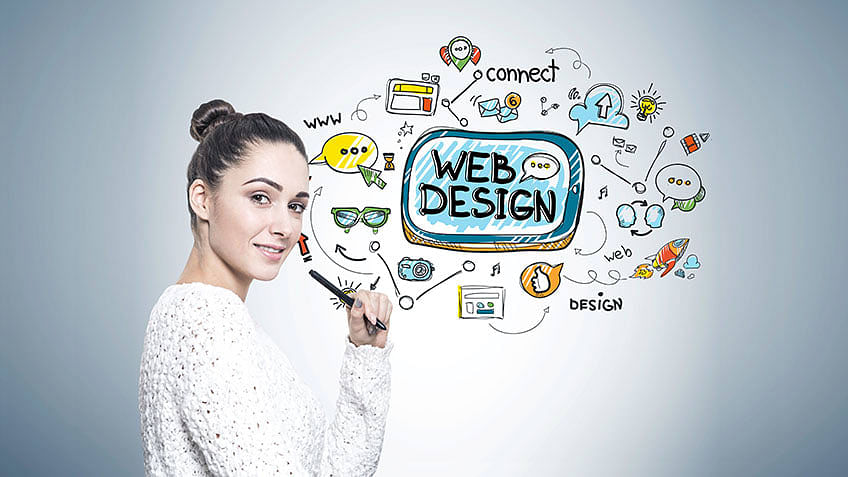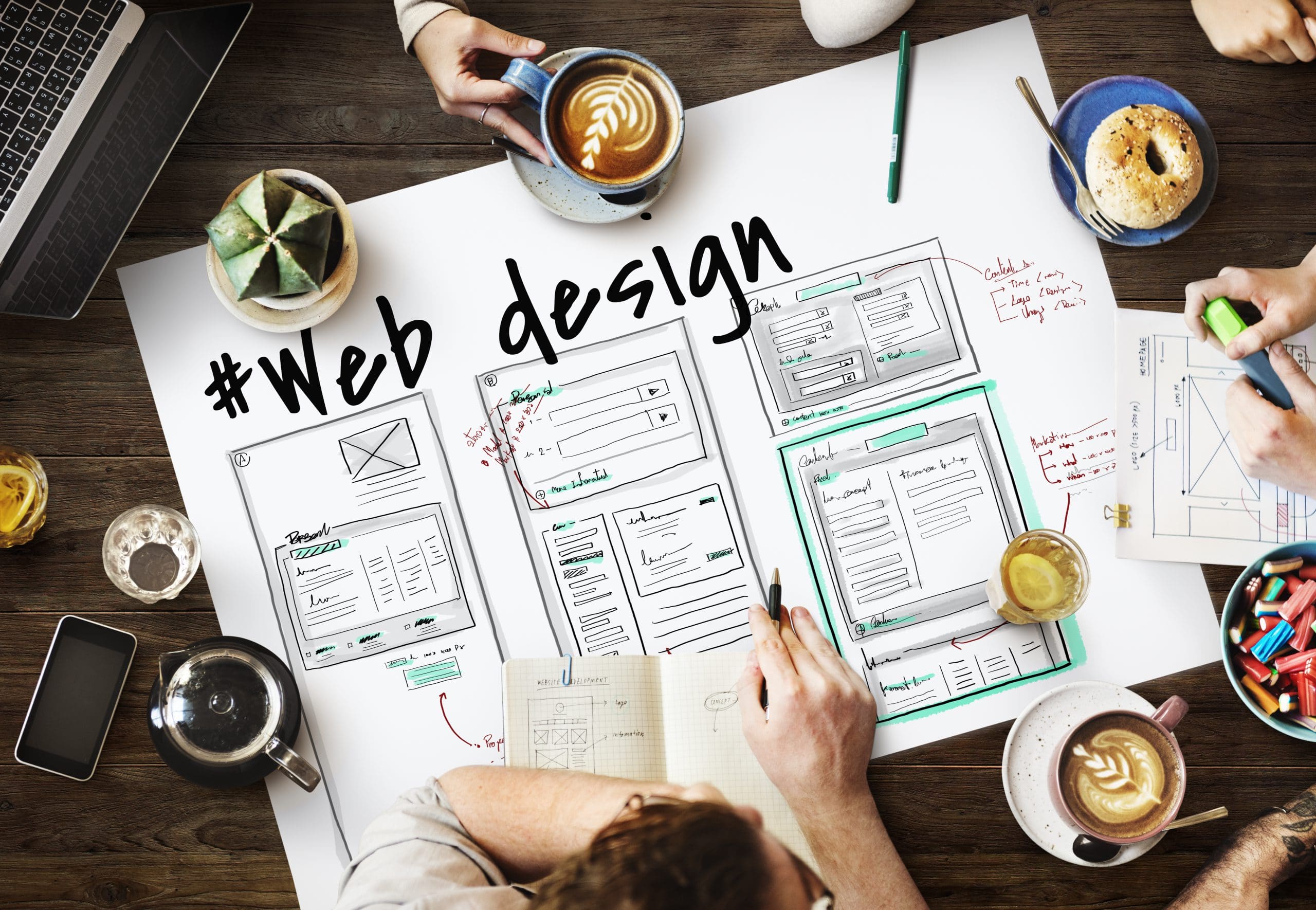How to Boost Customer Experience Via Strategic Website Design
In the realm of digital advancement, customer experience (UX) has actually ended up being the linchpin of successful internet layout. A calculated, user-centered approach, emphasizing aesthetic consistency, user-friendly designs, and receptive design, can significantly improve a site's usability and appeal. As we discover these principles in information, the value of integrating user feedback and the duty of UX in individual retention will certainly additionally be checked out, inviting a deeper understanding of this critical aspect of website design.
Understanding the Relevance of User Experience in Website Design
The significance of internet style exists not just in aesthetic appeals, however fundamentally in the individual experience it supplies. Individual experience, or UX, refers to the total experience an individual has while engaging with a site or internet application, particularly in regards to how comfortable and satisfying it is to utilize (Web Design In Guildford). It is an essential element of website design, as it directly influences the users' impacts, actions, and general interaction with the website
A properly designed internet site with an inadequate individual experience belongs to a lovely structure with a badly prepared interior; it may look appealing on the surface area, but it stops working to offer its desired objective efficiently. It might discourage customers from remaining on the internet site, bring about high bounce rates, low customer involvement, and eventually, failure to achieve the internet site's objectives. This highlights the value of integrating customer experience right into the internet style process right from the start.
Using User-Centered Style Principles
The application of user-centered style principles starts with recognizing individual habits. This understanding creates the basis for developing an effective interface design. These two vital aspects, when masterfully incorporated, lead to an enhanced customer experience on any type of web site.

Understanding Customer Actions
Why do customers behave the means they do on internet sites? Individual actions is dictated by a plethora of elements, chief amongst them being their particular requirements and preferences, prior online experiences, and total web savviness. Utilizing this knowledge, internet designers can produce a lot more effective, straightforward websites that fulfill the demands of their audience, thus enhancing customer experience.
Reliable User Interface Style

Leveraging Receptive Layout for Optimum Watching
Moving on in the discussion, the attention now moves to the significance of leveraging receptive design for optimal watching. This involves exploring the procedure of carrying out responsive internet layout and comprehending its influence on individual experience. The ensuing conversation intends to illuminate the advantages of optimum watching and exactly how receptive style facilitates it.
Implementing Receptive Internet Layout
Utilizing the power of responsive internet layout is an essential action towards improving customer experience. These elements combined produce a receptive web design that changes to the individual's requirements. While the procedure might seem complicated, the outcome is an extra easily accessible and instinctive site, considerably boosting the user experience.
Benefits of Optimal Viewing

Moreover, receptive style can cause boosted search engine optimization positions, as internet search engine favor websites that cater to multiple gadgets. It can reduce bounce prices and boost conversion rates as individuals are much less most likely to desert websites that are very easy to navigate. Hence, optimal viewing can substantially boost customer experience, making it a vital aspect of critical website design.
Integrating Easy Navigation and Intuitive Layouts
Ease and intuition in website navigation form the bedrock of customer complete satisfaction. If individuals battle to find what they are searching for, they are likely to desert the website and look for alternatives. Consequently, a tactical internet design have to integrate clear, easy-to-follow navigating and an user-friendly format. This can be achieved by arranging info in a hierarchical framework, with the most vital sections prominently included.
Straightforward navigation food selections, breadcrumb trails, and clickable switches direct users through the internet site easily. Uniformity in style elements across pages also contributes to intuitive navigating. For instance, placing the search bar or the shopping cart symbol in the exact same area on every page enables individuals to find these features promptly.
In addition, an instinctive design is Resources one that expects user requirements. It puts elements and details where customers expect them to be. This reduces the cognitive lots on customers, improving their general experience on the web site.
The Role of Visual Design in Individual Experience
While the framework and layout of a site are substantial for individual experience, the aesthetic style plays a just as vital role. A irregular or chaotic visual layout can puzzle customers and lead to an adverse user experience. Internet developers should tactically use visual layout elements to produce a unified and intuitive user interface that improves the total user experience.
Case Studies: Effective User Experience Style at work
Despite the theoretical understanding on customer experience design, it acquires genuine worth when used in practical situations. 2 remarkable case research studies highlight this. Airbnb, a global on the internet market, efficiently boosted their user experience by redesigning their site. By concentrating on customer feedback, they established an extra intuitive, straightforward user interface that substantially improved booking experiences. This caused increased individual contentment and conversion prices.
The results were a significant boost in mobile website traffic and individual engagement, showing the efficacy of calculated web layout in enhancing individual experience. These case researches show that sensible application of user experience style can yield considerable benefits.
Verdict
In conclusion, critical website design is a vital tool in boosting user experience. By using user-centric layout concepts, leveraging receptive design, including intuitive navigation and designs, and using the power of aesthetic layout, services can read this create websites that are involving and satisfying for customers. Effective website design, showcased via various successful situation researches, substantially boosts customer engagement and retention rates, showing its critical role in digital success.
As we check out these principles in detail, the significance of integrating customer responses and the role of UX in user retention will additionally be examined, inviting a deeper understanding of this vital facet of the original source internet style.
It may hinder customers from remaining on the website, leading to high bounce rates, reduced customer engagement, and eventually, failing to accomplish the web site's goals. A irregular or chaotic aesthetic style can puzzle individuals and lead to a negative user experience. Web designers must strategically use aesthetic layout aspects to produce a intuitive and unified customer interface that improves the overall user experience. The outcomes were a significant rise in mobile web traffic and individual engagement, showing the efficiency of strategic internet layout in improving user experience.